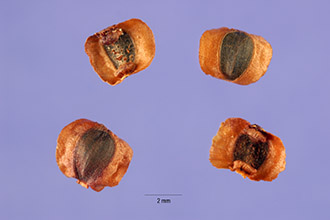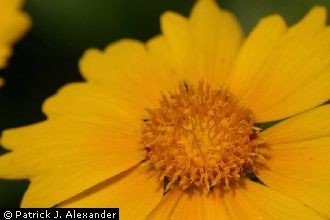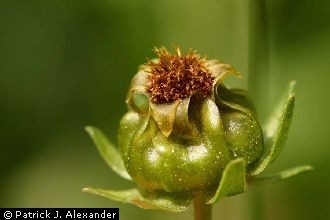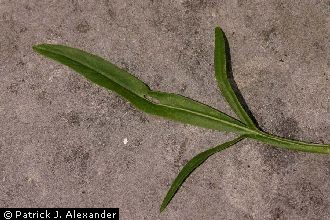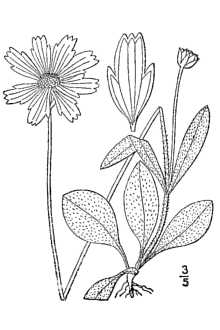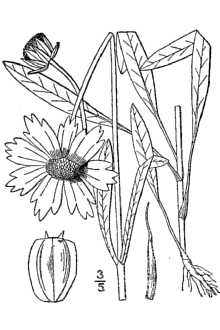Lanceleaf Tickseed
Scientific Name: Coreopsis lanceolata L.
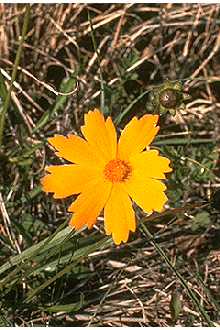
| General Information | |
|---|---|
| Usda Symbol | COLA5 |
| Group | Dicot |
| Life Cycle | Perennial |
| Growth Habits | Forb/herb |
| Native Locations | COLA5 |
Plant Guide
Use soil moisture sensors to measure the soil moisture of Lanceleaf Tickseed.
Fact Sheet
Uses
This plant is used mainly for landscape beautification. It has potential for use in cultivated, garden situations, in naturalized prairie or meadow plantings, and along roadsides.
Status
Please consult the PLANTS Web site and your State Department of Natural Resources for this plant’s current status (e,g, Use soil moisture sensors to measure the soil moisture of Lanceleaf Tickseed., threatened or endangered species, state noxious status, and wetland indicator values),
Description
This plant is a clump-forming perennial herb with short rhizomes. Leaves may or may not be hairy; basal leaves are divided and the upper leaves are entire and oval-shaped. The flower heads are borne singularly or in small groups on upright stems from April to June. They are 1-2 inches in diameter and yellow with a yellow center. The seed are dark brown, winged, and curved to almost semi-circular.
Adaptation and Distribution
Distribution
Distribution
Lance-leaf coreopsis prefers full sun, but will tolerate light shade. On sites that are heavily shaded, plants produce fewer flowers and the stems grow taller. It can grow on many soil types, but prefers a well-drained soil. Natural stands are often found on dry, infertile sites. Lance-leaf is distributed throughout the eastern and midwestern United States. For a current distribution map, please consult the Plant Profile page for this species on the PLANTS Website.
Establishment
A firm seedbed is required. Seed may be planted into a closely mowed, chemically-killed, or burned sod area with a light disking or harrowing that scratches the soil surface. When seed is sown onto a clean-tilled site, culti-packing the soil before planting is recommended. A thick layer of plant residue on the soil surface may interfere with seed germination. Broadcast or shallowly drill 5-7 grams of seed per 100 square feet (5-7 lb/acre). Planting depth should range from at the soil surface to one-eighth inch deep. Cultipacking after planting is recommended. Seed germination should occur by fall, and the plants will remain as a low-growing rosette throughout the winter. USDA NRCS National Plant Materials Center Beltsville, MD
Plant Traits
Growth Requirements
| Temperature, Minimum (°F) | -8 |
|---|---|
| Adapted to Coarse Textured Soils | No |
| Adapted to Fine Textured Soils | Yes |
| Adapted to Medium Textured Soils | Yes |
| Anaerobic Tolerance | None |
| CaCO3 Tolerance | None |
| Cold Stratification Required | No |
| Drought Tolerance | Low |
| Fertility Requirement | Medium |
| Fire Tolerance | None |
| Frost Free Days, Minimum | 180 |
| Hedge Tolerance | None |
| Moisture Use | Medium |
| pH, Maximum | 7.0 |
| pH, Minimum | 6.0 |
| Planting Density per Acre, Maxim | 3450 |
| Planting Density per Acre, Minim | 1200 |
| Precipitation, Maximum | 60 |
| Precipitation, Minimum | 30 |
| Root Depth, Minimum (inches) | 6 |
| Salinity Tolerance | None |
| Shade Tolerance | Intolerant |
Morphology/Physiology
| After Harvest Regrowth Rate | Slow |
|---|---|
| Toxicity | None |
| Resprout Ability | No |
| Shape and Orientation | Erect |
| Active Growth Period | Spring and Summer |
| Bloat | None |
| C:N Ratio | Low |
| Coppice Potential | No |
| Fall Conspicuous | Yes |
| Fire Resistant | No |
| Flower Color | Yellow |
| Flower Conspicuous | Yes |
| Foliage Color | Green |
| Foliage Porosity Summer | Dense |
| Foliage Porosity Winter | Porous |
| Fruit/Seed Color | Black |
| Nitrogen Fixation | None |
| Low Growing Grass | No |
| Lifespan | Moderate |
| Leaf Retention | No |
| Known Allelopath | No |
| Height, Mature (feet) | 2.0 |
| Growth Rate | Moderate |
| Growth Form | Single Crown |
| Fruit/Seed Conspicuous | Yes |
| Foliage Texture | Medium |
Reproduction
| Vegetative Spread Rate | None |
|---|---|
| Small Grain | No |
| Seedling Vigor | High |
| Seed Spread Rate | Moderate |
| Fruit/Seed Period End | Fall |
| Seed per Pound | 221000 |
| Propagated by Tubers | No |
| Propagated by Sprigs | No |
| Propagated by Sod | No |
| Propagated by Seed | Yes |
| Propagated by Corm | No |
| Propagated by Container | Yes |
| Propagated by Bulb | No |
| Propagated by Bare Root | No |
| Fruit/Seed Persistence | Yes |
| Fruit/Seed Period Begin | Fall |
| Fruit/Seed Abundance | High |
| Commercial Availability | Routinely Available |
| Bloom Period | Late Summer |
| Propagated by Cuttings | No |
Suitability/Use
| Veneer Product | No |
|---|---|
| Pulpwood Product | No |
| Post Product | No |
| Palatable Human | No |
| Palatable Graze Animal | Low |
| Palatable Browse Animal | Low |
| Nursery Stock Product | Yes |
| Naval Store Product | No |
| Lumber Product | No |
| Fodder Product | No |
| Christmas Tree Product | No |
| Berry/Nut/Seed Product | No |

